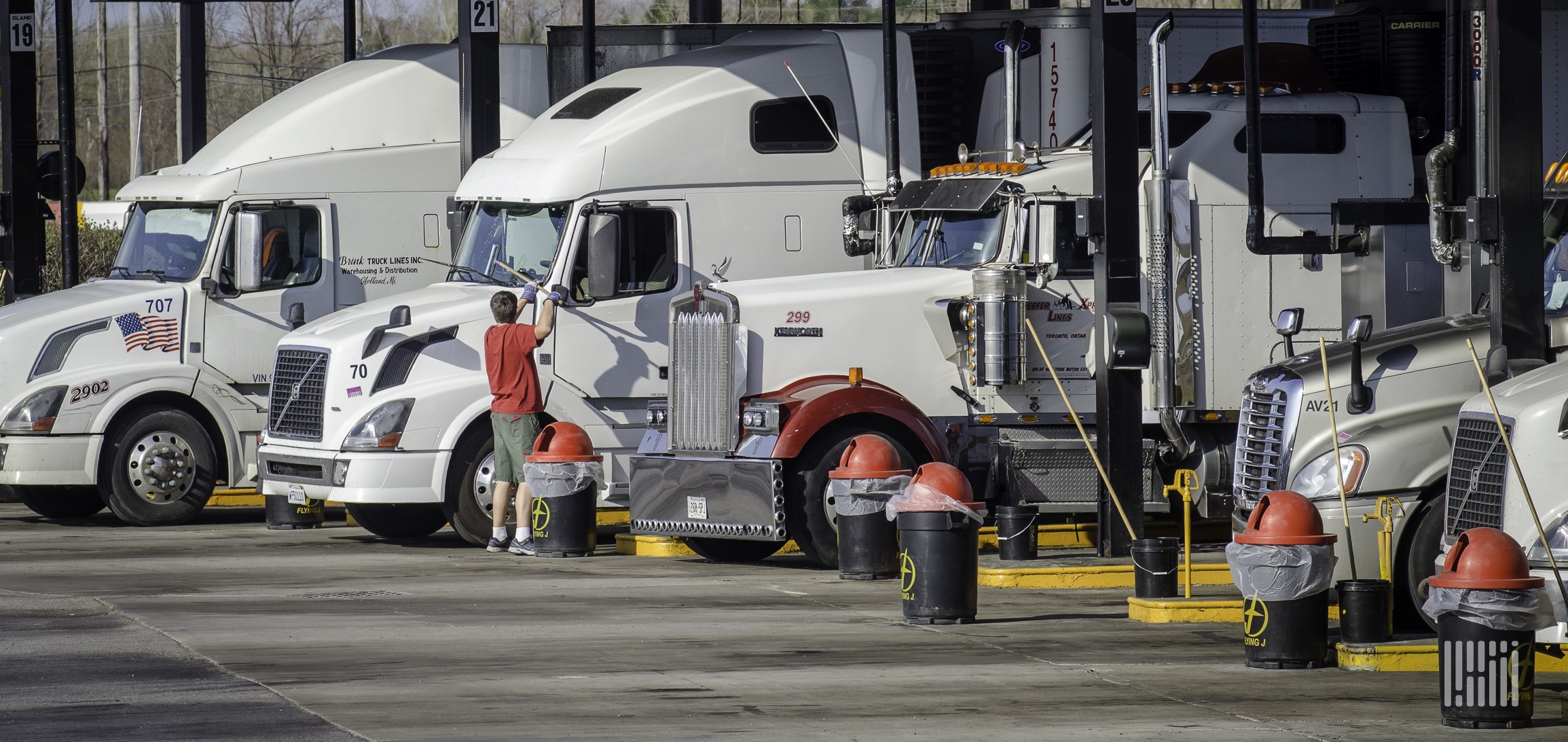Whether you are simply looking for ways to lower your overhead expenses or need to free up capital to scale your business, minimizing downtime and reducing fleet fuel costs should be two of your top priorities. If you can accomplish both objectives, you can reduce operating expenses and improve profit margins.
If you’re not sure where to begin, follow this guide on ways to minimize fleet fuel costs and vehicle downtime to get you started.
Why Is Minimizing Downtime and Lowering Fuel Costs Important in Transportation?
Before we discuss how you can reduce fuel expenses and downtime, let’s briefly recap why these should be among your primary goals.
By proactively working to reduce vehicle downtime and lower fuel expenses, you can:
- Reduce Overhead Expenses
- Improve Driver Safety
- Increase Profit Margins
- Reduce Your Impact on the Environment
- Minimize Financial Waste
- Optimize the Lifespan of Equipment
Ultimately, these benefits will help you move toward your business goals. Some benefits, such as reducing the amount of fuel your company consumes, can also improve your brand’s reputation among clients and the public by reducing your carbon footprint.
9 Ways to Reduce Downtime and Lower Fuel Costs
If your goal is to lower fuel costs and reduce vehicle downtime, we recommend that you work on some of the following.
1. Schedule Regular Driver Training Sessions
Driver training provides the perfect opportunity to remind your staff of safe driving habits. Reviewing company policies regarding vehicle operations and discussing organizational goals can make sure that your goals align with your driver’s actions. The exact number of training sessions that you host will vary based on factors like your budget and how many employees you have.
However, you should strive to schedule at least one driver training session per year. If budgetary constraints allow, you should try to host biannual or quarterly sessions, as this cadence will maximize the impact of your training efforts.
2. Reward Good Driving Behavior
Driving habits have a huge impact on fuel efficiency and vehicle longevity. In light of that reality, you should promote driver safety and standardize vehicle operation habits by creating a rewards program.
Rewards do not have to be extravagant to incentivize your staff. Offering rewards like quarterly bonuses, gift cards, or free equipment to top drivers can significantly improve employee participation in your safety initiative.
3. Use Technology
Modern technologies like electronic logging devices, dash cams, and GPS solutions can help you monitor both driver and vehicle performance. You can use the data provided by these devices to track fuel costs, identify savings opportunities, and ensure that your staff practices good driving habits.
The best solutions will also help you reduce downtime by providing data on vehicle health and facilitating the scheduling of equipment maintenance.
4. Perform Regular Vehicle Inspections and Maintenance
Speaking of maintenance, adhering to regular inspections and an upkeep schedule is imperative. Routine inspections will help your staff identify equipment concerns before these issues cause more serious or costly problems.
Inspections will also reduce the likelihood that your vehicles will break down while drivers are on the road. Cumulatively, this proactivity will minimize vehicle maintenance expenses and reduce driver downtime.
5. Use Fleet Fuel Cards
Fleet fuel cards are a great way of monitoring your fuel costs. The best fuel card solutions include online tools that provide detailed reports about fuel consumption.
You can track both aggregate fuel consumption and individual fuel costs. This breakdown allows you to identify trends in fuel consumption across your entire fleet and for each driver.
Fuel card reporting tools can help you pinpoint whether rising fuel expenses are being caused by external factors, driving habits, equipment issues, or a combination thereof.
6. Optimize Driver Routes
When your drivers are on the road, taking the optimal routes to their delivery destinations can change by the minute. Using fleet management software to implement this requirement can become particularly important for less-than-truckload (LTL) drivers, as they make multiple stops during a single workday.
Optimizing driver routes using a route planning solution can save your money and protect your assets. With better routes, your drivers will be putting fewer miles on your trucks, and you won’t have to pay them for unnecessary miles. Additionally, this technology will help you reduce fuel costs, improve delivery efficiency, and keep customers happy.
7. Keep Tires Properly Inflated
Keeping tires properly inflated may seem like a pretty low priority in the grand scheme of fleet management. However, this simple yet often overlooked task can provide a boost to vehicle fuel efficiency. When you multiply this improvement across your entire fleet, you could potentially save thousands of dollars a year while also avoiding other problems.
If you are interested in using other fuel efficiency-boosting tactics, check out this list of 10 proven tips.
8. Set Speed Restrictions
Setting speed restrictions will improve driver safety and reduce fuel costs. Talk about a win-win.
In addition to helping your drivers stay safe and conserve fuel, setting speed restrictions will also reduce the likelihood of one of your vehicles being involved in an accident. In turn, this will keep your insurance premiums lower and pave the way for long-term cost savings.
9. Know When to Retire Vehicles
Buying new (or newer) fleet vehicles can be incredibly expensive. As such, it is only natural that you would want to squeeze every single mile out of your existing equipment.
While we fully support making financially savvy fleet decisions, it is equally important to know when to retire your aging vehicles. Once you reach a point of diminishing returns, you should move on from your old equipment and invest in new fleet vehicles. Doing so can lead to long-term cost savings and reduced downtime.
Modifying Driving Habits Holds the Key to Keeping Your Wheels Turning
As you can see, many of the tactics outlined above focus on modifying driving habits and encouraging your team to support your fuel-saving initiatives. Drivers influence the fuel consumption and vehicle downtime more than any other variable.
With that in mind, you should invest in driver and vehicle monitoring technologies such as electronic logging devices (ELDs) and dash cams. These technologies will provide invaluable insights into driver safety, fuel consumption, vehicle performance, and maintenance needs.
As you begin your search for vehicle and driver monitoring solutions, we invite you to explore FreightWaves Ratings’ platform. You will find product reviews, guides to choosing ELDs, and much more.
FAQ
“Reducing downtime” refers to the practice of proactively keeping your trucks operational by conducting regular maintenance and performing routine inspections.
Many factors contribute to high fuel consumption, including bad driving habits like speeding and equipment defects like underinflated tires.
Fuel costs can be calculated by adding together the amount of fuel used by each vehicle over a specified period. Alternatively, you can use fleet fuel cards, which generate automated fuel cost reports.


